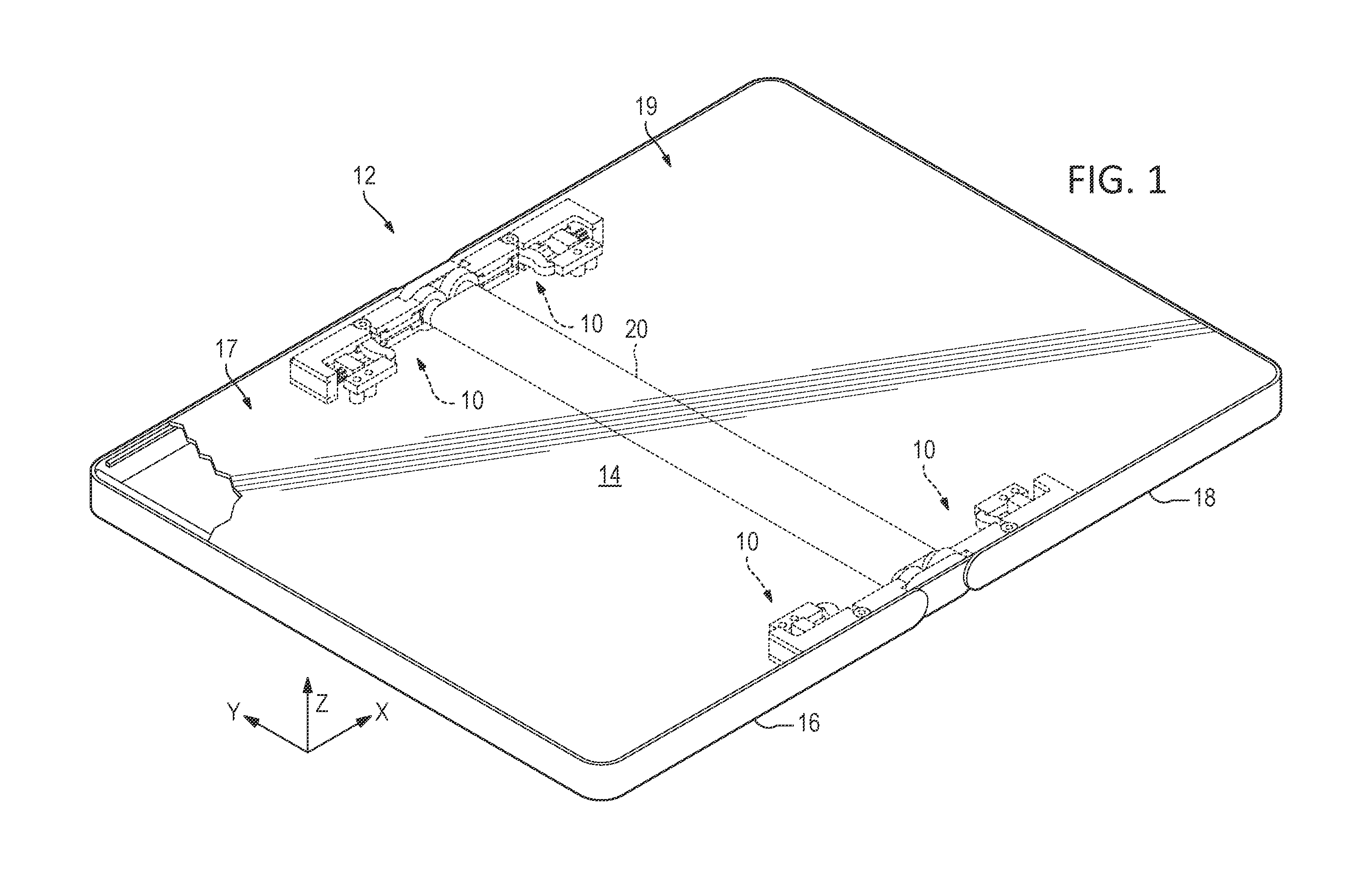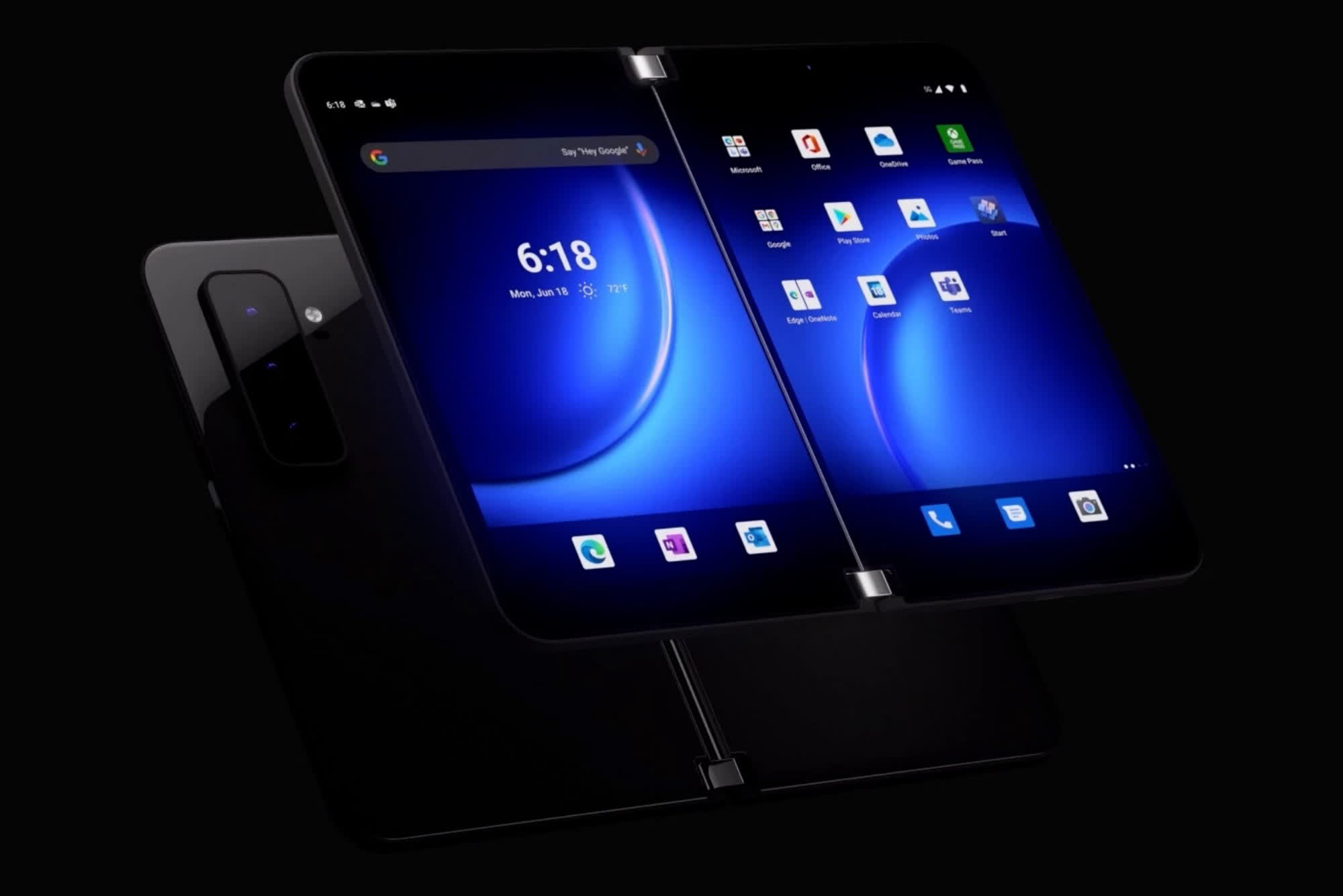The big picture: Microsoft is still trying to do weird things with flexible screens and foldable form factors. A recently unveiled patent describes a novel approach that goes beyond the notorious Surface Duo phone, with truly back-to-back folding capabilities.
The dual-screen approach of the Surface Duo didn't work out, but Microsoft is seemingly still interested in developing a completely flexible device. A patent published on the World Intellectual Property Organization's website (WIPO) describes a "computing device display frame translation mechanism," which according to Microsoft would provide a better experience compared to flexible display-based devices already on the market.
Other flexible devices cannot fold the display in the opposite direction "into an open or back-to-back orientation," Microsoft notes in its patent application, as these devices utilize hinge designs that would "stretch and exert tensile stresses" on the flexible display and ultimately damage it while folding outward.
Microsoft's approach employs a complex folding mechanism that should "substantially" eliminate any potentially damaging tensile stress to the display. A cam-based system is designed to adjust the position of the device's two halves relative to the spine, when the device is in a back-to-back position compared to when it's closed normally.

Microsoft isn't the only company trying to do new things with flexible display technology, despite the fact that consumers aren't exactly rushing to replace their traditional, single-display smartphones with foldable devices. Samsung, the leading company in the space, already showed a solution similar to the one described in Microsoft's patent earlier this year. LG also demonstrated a 360-degree foldable OLED screen more than a year ago.
Microsoft isn't doing anything new or revolutionary, and the foldable devices previously made by the company haven't exactly be met with enthusiasm or users' interest. At this point, a 360-degree foldable screen could turn out to be a bad idea for a company focusing mostly on cloud, AI, and unprecedented acquisitions in the gaming industry.
The patent has been published and is available for public review, but it hasn't been granted by WIPO yet. Microsoft could also decide not to use the technology in any actual product, a frequent outcome of granted patents.
